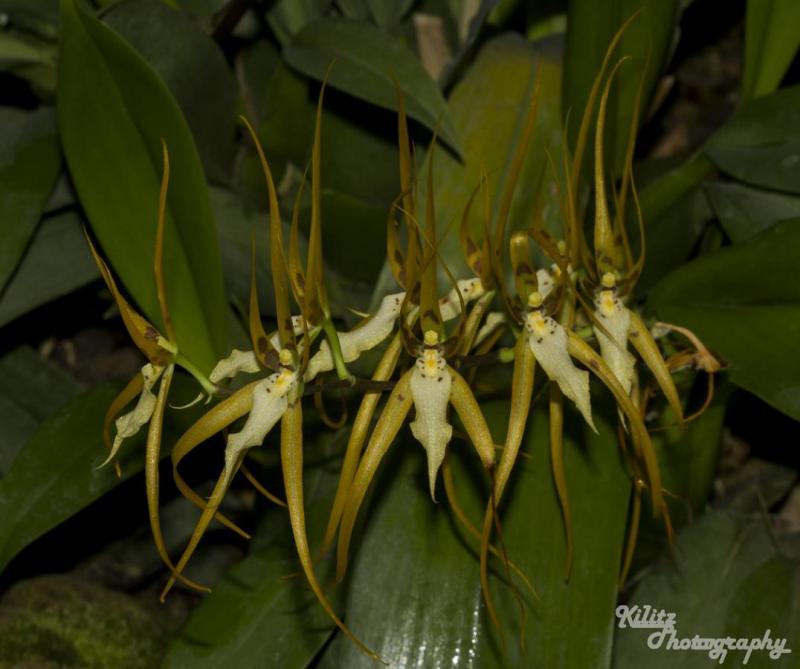Brassia lanceana
Also known as: Lance's Brassia or Oncidium josstianum Brassia lanceana var. minor Brassia josstiana Oncidium suaveolens in the subfamily: Epidendroideae
Native to: Amapa - Brazil Amazonas - Brazil Amazonas - Colombia Amazonas - Peru Departamento del Huila - Colombia Pasco - Peru Provincia del Pastaza - Ecuador Sao Paulo - Brazil
General Information
Lance's Brassia is a medium sized sympodial warm to hot growing epiphytic orchid belonging to the sub family Epidendroideae native to Brazil, Colombia, Peru, and Ecuador. It is named after the English Orchid Collector in the 19th century.
Plant Description
Sympodial. Grows to 40-50cm. Each new growth has numerous leathery rigid, lance shaped, oblong shaped leaves that grow to 3.5-40cm long. Pseudobulbs grow to 2-12cm
Flowers
Numerous fragrant blossoms appear
Fragrance
The orchid is fragrant.
Care Notes
These orchids have a fine root system that can quickly die back if left dry for too long, but also does not like to be kept wet, so water regularly but ensure that the mix is dry before watering.
Fragrant:- IsFragrant
Climate
Grows at low to high elevations. Rainfall ranges from 81mm to 244mm per day, heaviest in May and lightest in January. Humidity ranges from 77% to 89%, highest in June and lowest in March. Temperature ranges from 18C to 32C, highest in February (21C to 32C) and lowest in September (18C to 30C).
Watering
These orchids prefer a wet-dry cycle between waterings, they should be watered frequently but only when the moisture is approaching dryness, where the pot feels light and/or the media looks dry. Keep an eye on mounted orchids in warm weather as they may dehydrate quickly.
Fertiliser
These orchids do not need to be regularly fertilised and roots may be sensitive to salt build-up, dying back and therefore impairing the plants growth or even killing it.
If fertilising, use half to quarter of the recommended amount of fertiliser. If they receive fertiliser as part of a collection, be sure to flush out the pots regularly with fresh water and monitor the roots by checking how much resistance is given by the plant when nudged in its pot or mount. If the plant becomes wobbly or loose, repot in fresh mix or rinse the media/mount thoroughly and do not fertilise for at least 3 months.
This plant is sensitive so apply fertiliser sparingly at one quarter recommended strength or less.Potting
These plants are quite forgiving and will do well repotted ever 2-3 years. The mix should be coarse, well draining, and allow space for air to move and for roots to grow.
Alternatively, these plants will also do well mounted to tree fern or cork slabs, or mounted to trees.
Best time for repotting or mounting the orchids is the end of winter when new growths start to appear. Avoid repotting during hot weather,






